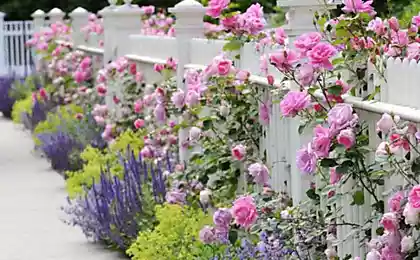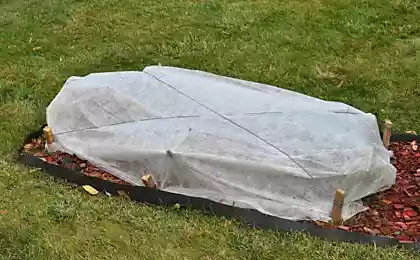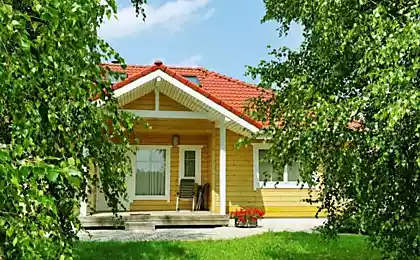194
How to prevent roses from freezing in winter
Roses are southern squirrels, they do not tolerate cold and suffer from winter weather. In order not to kill delicate beauties, you need to take care of their safety in the cold. It is important to do this correctly and carefully, so that in the spring roses will please you with their appearance.
16780
Editorial "Site" What roses are covered for the winter and how to do it.
To begin with, it is worthwhile to figure out why to hide roses? First, the shelter serves as an excellent protection from winter frosty winds. The bark of roses, like all southern plants, is very delicate and delicate. Due to the wind, moisture from the stems will evaporate at an unprecedented rate, which will lead to the depletion of the bush.
The shelter perfectly retains moisture, creating a microclimate that reduces the evaporation of the necessary fluid from the twigs. Moisture is retained there until the onset of a favorable spring period.
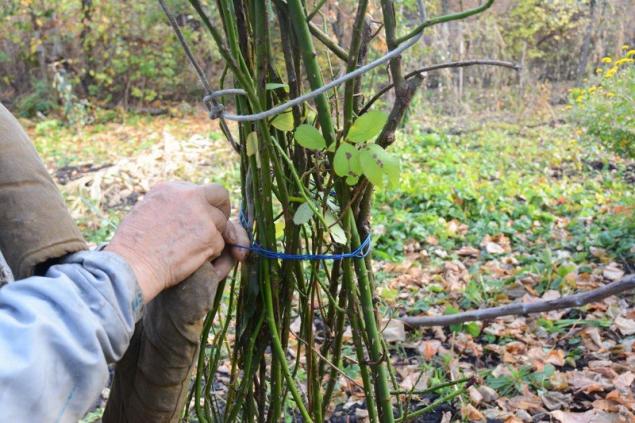
Secondly, the shelter protects the rose from temperature changes. Too low temperatures have a bad effect on the condition of the plant. Inside the shelter, the temperature is stable, its fluctuations softer affect the condition of the bush. And you need to protect the rose not only from frost, but also from thaw.
The rose perceives any warming as a signal that it is time to bloom. However, in our lands the thaws are very deceptive, after them comes frost, with which the plant cannot cope. This injures the rose, which is why it is so important to provide it with a more or less stable temperature.
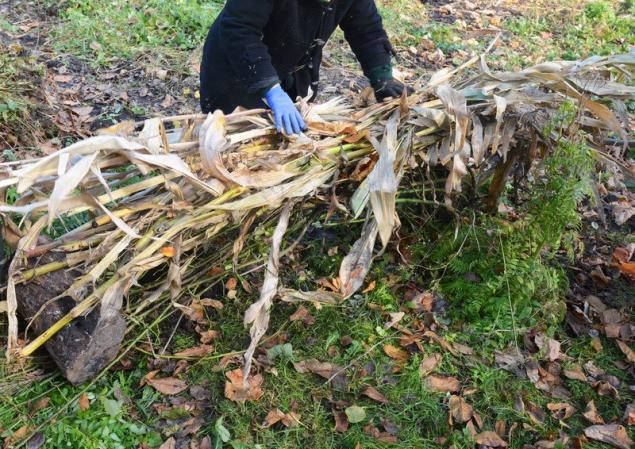
Should all roses be covered? The need to shelter roses depends on the winter resistance of the variety and weather conditions in your region. It is best to find out before buying seedlings, so that later it does not become a surprise. A relatively mild winter can survive even those varieties that are not considered winter-resistant. However, in the harsh cold, gentle beauties are better to hide.
Leaders in winter resistance are park roses (Ritausma, Pink, Konrad Ferdinand Meyer), species roses, or rosehips, absolutely winter-resistant varieties (Skabroza, Jens Munch, Hanza), as well as some hybrids of roses alba, rugosa. All other roses should be covered. Next, you have to choose a way of shelter.
Remember that roses are very tender and require a sufficient amount of feeding. Do not forget to fertilize the plant before hiding. During the summer flowering period, the plant was depleted, so during the winter it needs to get stronger. In autumn, roses need phosphorus, calcium and potassium. Find the right fertilizer.
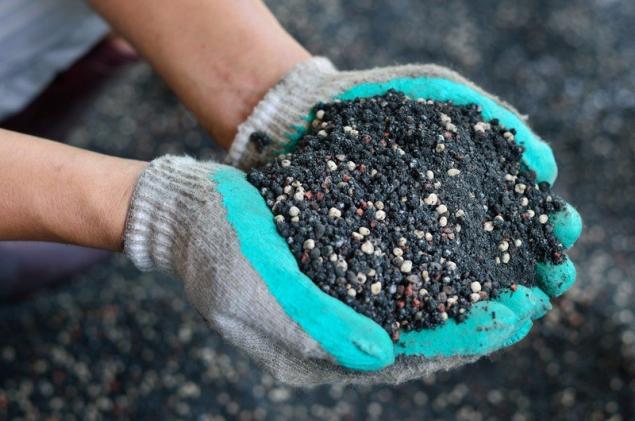
Rose shelter begins in October or November, when the first frost begins. Weak frosts are not afraid of plants, they will only temper them, but you can not wait until severe frosts. First of all, cut off all soft grassy shoots from the bush, remove all the leaves. Then cut the bush to a height of about 30-40 cm.
Before sheltering, it is recommended to treat the plant with antifungal drugs. Only then should we proceed to the shelter itself. To do this, you can use one of the popular ways, choosing the one that suits you better. Of course, you can spend money and buy agro fabric to provide plants with a comfortable wintering. However, there are simpler and cheaper ways.
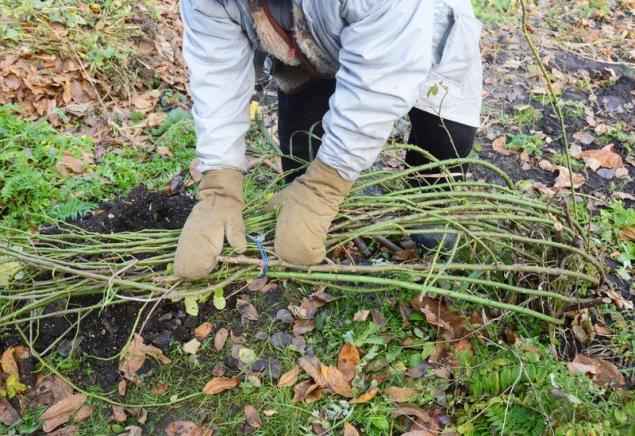
In this video, you can learn more about the air-dry method of sheltering roses.
about:blank
Caring for roses pays off completely. If you shelter and feed them in autumn, they will delight you with new strong shoots in spring, and in summer you will not be able to admire the incredible flowering of your southern beauty. Which method do you prefer?
16780
Editorial "Site" What roses are covered for the winter and how to do it.
To begin with, it is worthwhile to figure out why to hide roses? First, the shelter serves as an excellent protection from winter frosty winds. The bark of roses, like all southern plants, is very delicate and delicate. Due to the wind, moisture from the stems will evaporate at an unprecedented rate, which will lead to the depletion of the bush.
The shelter perfectly retains moisture, creating a microclimate that reduces the evaporation of the necessary fluid from the twigs. Moisture is retained there until the onset of a favorable spring period.

Secondly, the shelter protects the rose from temperature changes. Too low temperatures have a bad effect on the condition of the plant. Inside the shelter, the temperature is stable, its fluctuations softer affect the condition of the bush. And you need to protect the rose not only from frost, but also from thaw.
The rose perceives any warming as a signal that it is time to bloom. However, in our lands the thaws are very deceptive, after them comes frost, with which the plant cannot cope. This injures the rose, which is why it is so important to provide it with a more or less stable temperature.

Should all roses be covered? The need to shelter roses depends on the winter resistance of the variety and weather conditions in your region. It is best to find out before buying seedlings, so that later it does not become a surprise. A relatively mild winter can survive even those varieties that are not considered winter-resistant. However, in the harsh cold, gentle beauties are better to hide.
Leaders in winter resistance are park roses (Ritausma, Pink, Konrad Ferdinand Meyer), species roses, or rosehips, absolutely winter-resistant varieties (Skabroza, Jens Munch, Hanza), as well as some hybrids of roses alba, rugosa. All other roses should be covered. Next, you have to choose a way of shelter.
Remember that roses are very tender and require a sufficient amount of feeding. Do not forget to fertilize the plant before hiding. During the summer flowering period, the plant was depleted, so during the winter it needs to get stronger. In autumn, roses need phosphorus, calcium and potassium. Find the right fertilizer.

Rose shelter begins in October or November, when the first frost begins. Weak frosts are not afraid of plants, they will only temper them, but you can not wait until severe frosts. First of all, cut off all soft grassy shoots from the bush, remove all the leaves. Then cut the bush to a height of about 30-40 cm.
Before sheltering, it is recommended to treat the plant with antifungal drugs. Only then should we proceed to the shelter itself. To do this, you can use one of the popular ways, choosing the one that suits you better. Of course, you can spend money and buy agro fabric to provide plants with a comfortable wintering. However, there are simpler and cheaper ways.

- bush-house
You can build a simple hut for plants from two wide panels or assembled boards. From above, you can cover it with a film that reliably protects the bushes from wind and precipitation. Its convenience lies in the fact that if necessary, the hut can be aired, the rose gets access to fresh air and is less likely to forbid.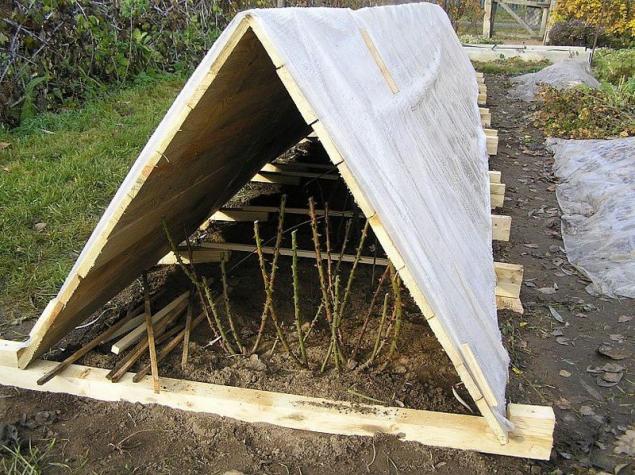
- Option for a warm winter
When winter is expected to be mild, the bush is simply covered with earth. On the formed hills with a height of 30-50 cm, you can simply lay a little spruce or dry leaves. Under such a shelter, roses will survive the winter. You can also cover with sawdust, under them the plant feels comfortable.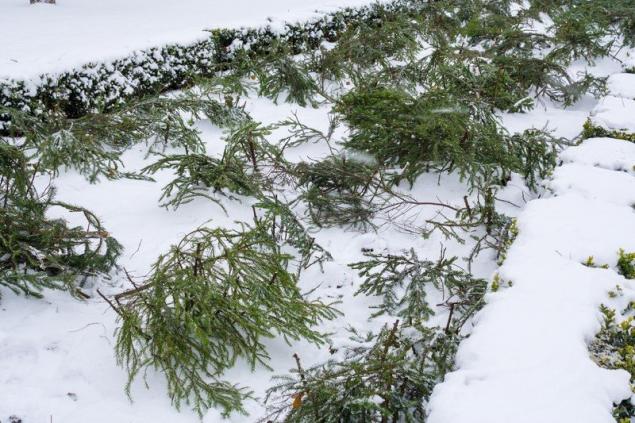
- Air-dry method
This method is used for very delicate varieties or very valuable ones. In this case, the rose (if it is bush) is completely trimmed to the base or the stems are laid on the ground and fixed with metal staples. Then they put spruce, needles, dry foliage or sawdust on them. Further, pegs are installed along the perimeter, on top of which a mat is laid, and a film is placed on top of it. The edges of the film are fixed by stones, but one end remains open. This shelter is periodically ventilated. Its advantage is that the rose has something to breathe, and the amount of moisture is not excessive. This method ensures the best survival of even the most delicate varieties of roses.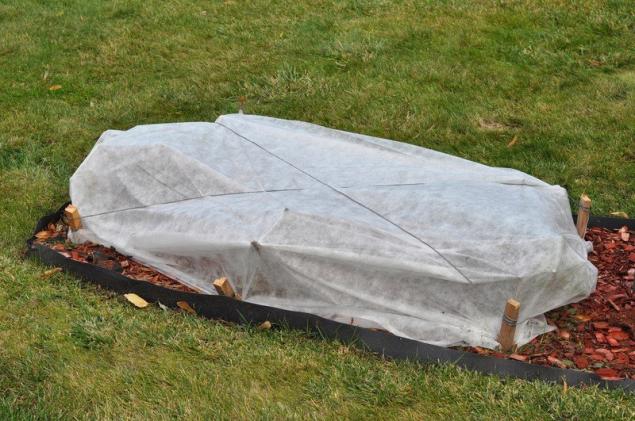
In this video, you can learn more about the air-dry method of sheltering roses.
about:blank
Caring for roses pays off completely. If you shelter and feed them in autumn, they will delight you with new strong shoots in spring, and in summer you will not be able to admire the incredible flowering of your southern beauty. Which method do you prefer?



